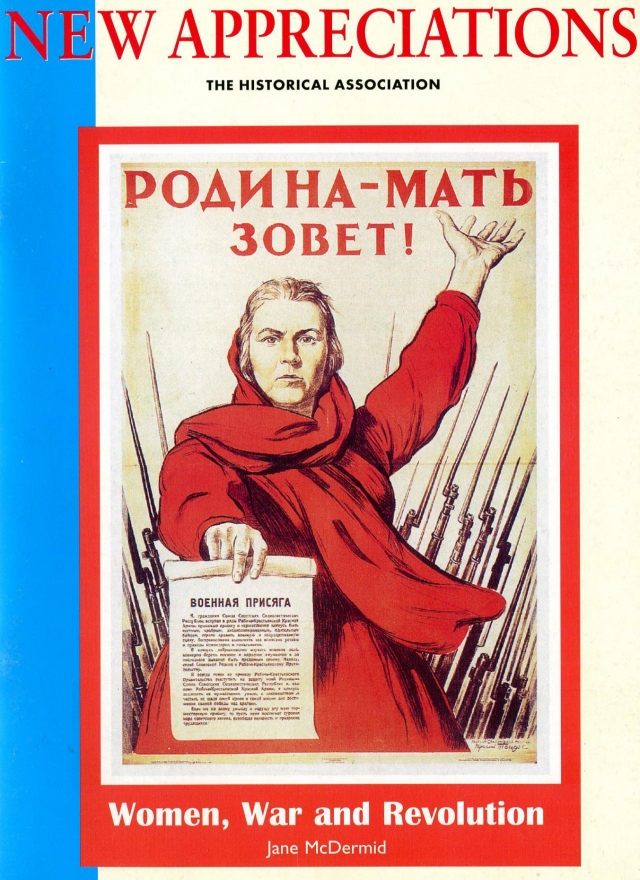Women, War and Revolution
Classic Pamphlet

Change & Continuity
On the surface, the period 1914 to 1945 seems to have encompassed massive changes in the position of women in Europe, in response to the demands of war and revolution. Yet historians have questioned the extent of the transformation, since the acquisition of the vote, as well as improvements in female education and employment, did not in practice bring women social or political equality with men. Indeed, at the end of both the First and Second World Wars, and of the Spanish Civil War, there was a backlash against the ‘New Woman'. Moreover, the first half of the twentieth century witnessed widespread demographic anxiety throughout Europe, which was reflected in the construction of welfare systems and the adoption of pro-natalist population policies. Hence whatever the political system, the state became increasingly interventionist in social policy, reinforcing the nuclear family, with the mother at its heart, and the father at its head.
Though some changes were made, war and revolution did not bring any radical turning-points for women. Not only did many of the gains made by women in both World Wars prove to be short-lived, but ideologies, of both left and right, either prevented or limited changes in the status of women. In addition, a study of this period reveals significant diversity in women's experience of war and revolution, not only between states, but within individual societies. Certainly, the inter-war depression, particularly in the 1930s, pushed women's rights off the political agenda, as the fight against mass male unemployment took precedence throughout much of Europe. In contrast, in Stalin's Russia, the push for modernisation greatly expanded women's education and job opportunities. However, it did not lead to a revolution in relations between the sexes. Indeed, what all European states had in common in the inter-war period was a stress on pro-natalism, with the wife in the role of nurturer, identified not only with the family but with the welfare state. Thus, in 1945, the elements of continuity in the position of women in Europe since 1914 were much more striking than those of change.
This resource is FREE for HA Members.
Non HA Members can get instant access for £3.49

